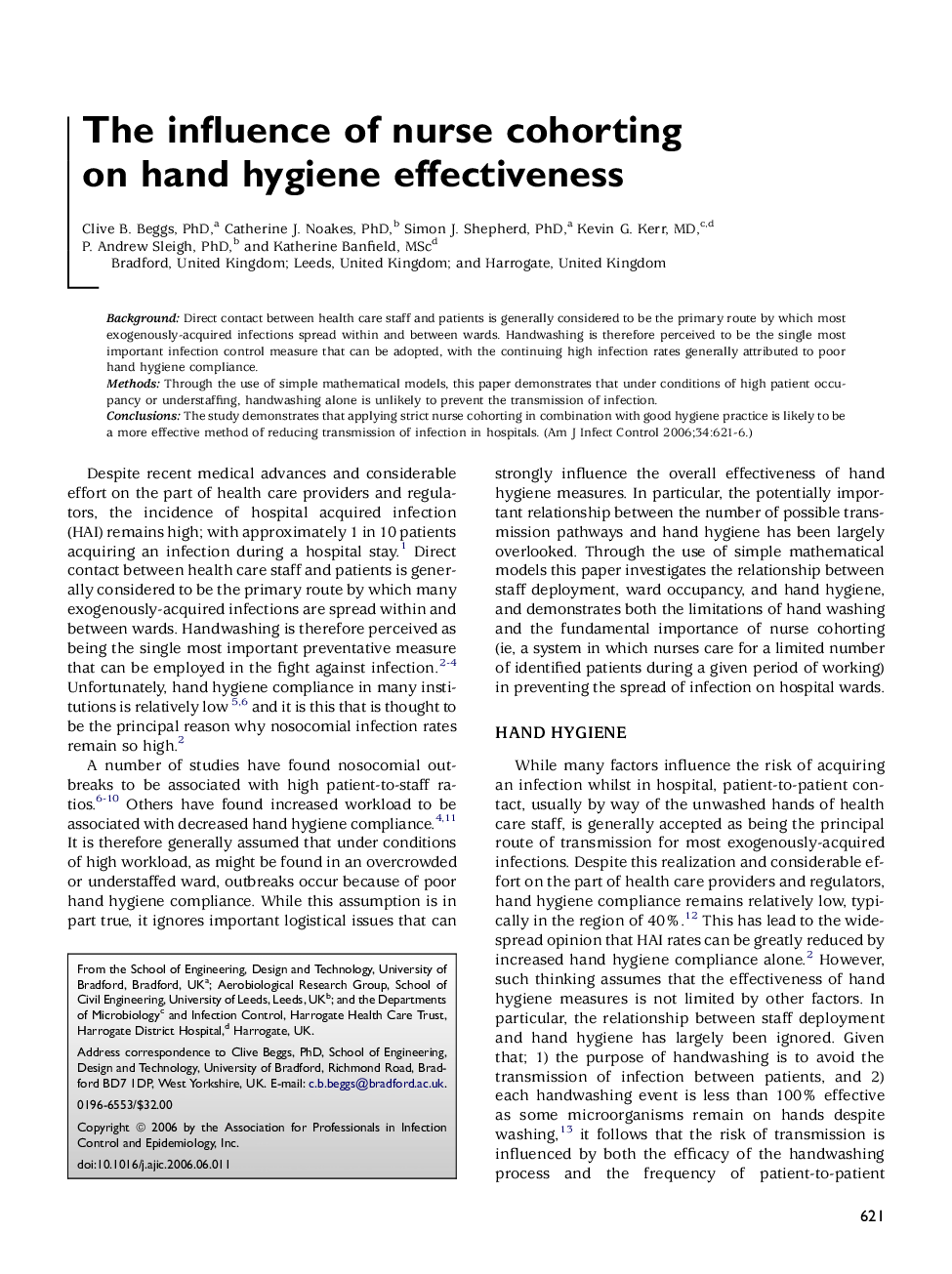| Article ID | Journal | Published Year | Pages | File Type |
|---|---|---|---|---|
| 2639775 | American Journal of Infection Control | 2006 | 6 Pages |
BackgroundDirect contact between health care staff and patients is generally considered to be the primary route by which most exogenously-acquired infections spread within and between wards. Handwashing is therefore perceived to be the single most important infection control measure that can be adopted, with the continuing high infection rates generally attributed to poor hand hygiene compliance.MethodsThrough the use of simple mathematical models, this paper demonstrates that under conditions of high patient occupancy or understaffing, handwashing alone is unlikely to prevent the transmission of infection.ConclusionsThe study demonstrates that applying strict nurse cohorting in combination with good hygiene practice is likely to be a more effective method of reducing transmission of infection in hospitals.
